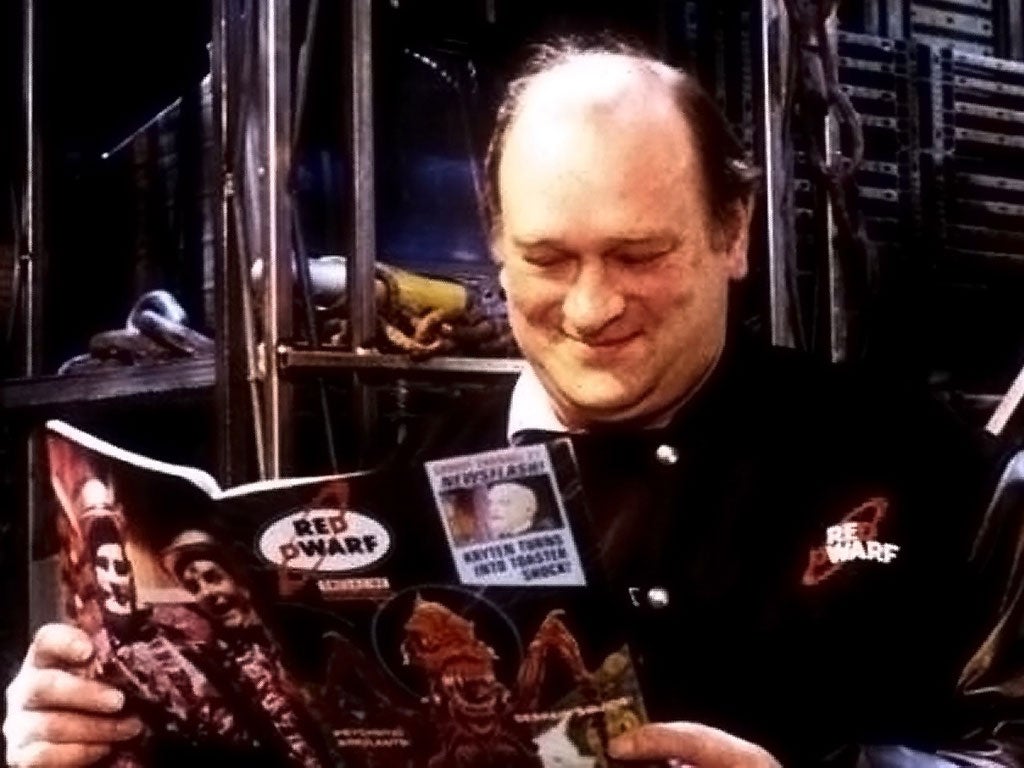Peter Wragg: Designer best known for the 'Red Dwarf' spaceship

A visual-effects designer who stimulated the imaginations of science-fiction viewers with his inventions for televison, Peter Wragg made his biggest impact with Red Dwarf. Wragg surprised the programme's creators, Rob Grant and Doug Naylor, by painting red the eight-foot-long, damaged mining spaceship featured in the opening titles. This iconic image, accompanied by Howard Goodall's theme music, firmly etched Wragg's imprint on the series, which ran originally from 1988 to 1997, and was as far away from Hollywood as possible.
"Rob and Doug didn't want it to look like a sophisticated spaceship – they wanted it to look like something that had been around for donkey's years," recalled Wragg of his brief. "A meteorite had imbedded itself in it – so they left it there!"
Aficionados of the sci-fi comedy were also enthralled by Wragg and his team of model-makers' other creations, including craft such as Blue Midget, Starbug, Carbug, White Midget and White Giant, and the head of the robotic servant Kryten. In 1991, Wragg shared with Angus Bickerton and Mike Turner the Royal Television Society's Best Visual Effects Award for Red Dwarf.
Born in Buckinghamshire in 1946, Wragg enjoyed model-making as a child but, on finishing at the William Penn School, Slough, at the age of 16, worked in a bank. Eighteen months later, when his father's building firm took a contract with AP Films, the company run by the producer Gerry Anderson, he heard that it was looking for a gofer and landed the job. He then became a special effects assistant, cutting his teeth on the puppet series Thunderbirds (1965-66) and working under the visual-effects director Derek Meddings, who went on to apply his talents to the James Bond and Superman films, and win an Oscar.
With Anderson's team, Wragg was valued for his ability to make the various craft "fly", as well as building sets and landscapes. He also learned the art of creating explosions, which would prove invaluable in future years, and was the second-unit visual-effects director on the 1966 film spin-off Thunderbirds are GO.
He had the same job on Anderson's next puppet series, Captain Scarlet and the Mysterons (1967-68), by which time the company had been renamed Century 21 Television. Wragg then worked on The Secret Service (1969) and UFO (1970-71) – Anderson's first live-action series – before the business closed.
With few prospects in the ailing British film industry, he qualified as a toolmaker on a government training scheme and worked at a factory in High Wycombe, Buckinghamshire, for six years. However, a former Century 21 colleague told Wragg of work at the BBC and he landed a four-month contract as a visual-effects assistant, which then became permanent.
Some of his first work was on the final series of the sitcom Some Mothers Do 'Ave 'Em (1978), designing props for Michael Crawford's ambitious stunts, which included riding a motorcycle through a hay loft, leaping 50 feet through the air and crashing into a pond.
On being promoted to designer, Wragg's credit appeared on a wide variety of programmes, from The Hound of the Baskervilles (1982), the nuclear-attack drama-documentary Threads (1984) and an adaptation of the Wilkie Collins novel The Moonstone (1996) to the sitcoms 'Allo 'Allo! (1982) and Bottom (1991-95).
Wragg also worked on the Doctor Who stories including "The Visitation" (1982) and "Resurrection of The Daleks" (1984), and even appeared inside the costume of a Fendahleen, one of the creatures he created, in "Image of the Fendahl" (1977).
In later years, the BBC's visual-effects department was hired out to commercial television companies. Granada used it for the ITV drama The Ebb-Tide (1997), in the same year that Wragg became joint head of the department.
He retired in 2000 and he and his wife, Hilary, had recently moved to Hertfordshire.
Red Dwarf was revived by the digital television channel Dave with a three-part special in 2009. A new series will be screened later this year.
Anthony Hayward
Peter Howard Wragg, visual-effects designer: born Farnham Royal, Buckinghamshire 13 December 1946; married 1968 Hilary Lambie (one son, one daughter); died Welwyn Garden City, Hertfordshire 15 April 2012.
Join our commenting forum
Join thought-provoking conversations, follow other Independent readers and see their replies
Comments
Bookmark popover
Removed from bookmarks